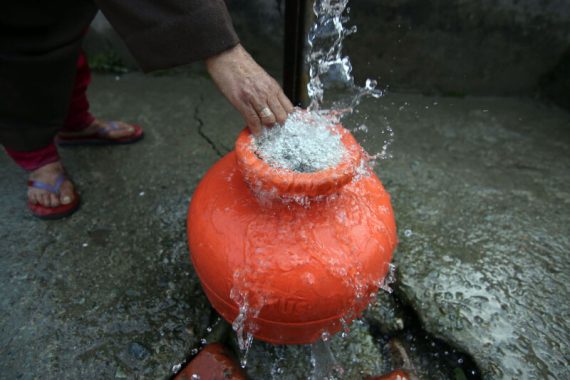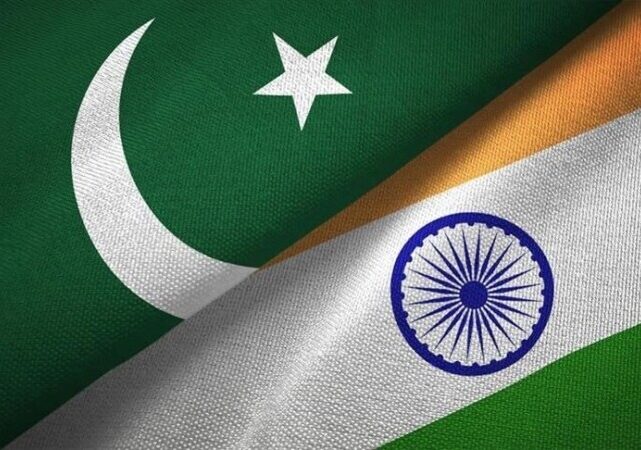The World Resources Institute (WRI) warned that 25 countries around the world, which make up a quarter of the world’s population, are at risk of water scarcity due to high stress on their available water resources.
According to the organization’s report, published on August 16, 2023, around four billion people in 25 countries are living with high levels of water stress for at least one month, posing imminent risks to human livelihoods, health, crops, livestock and energy security.
In the absence of effective water management, population growth, economic activity and climate change are factors that will exacerbate water stress, the organization says.
Most affected regions
According to World Resources Institute report, the regions most affected by water stress are the Middle East and North Africa, where 83% of the population is experiencing extreme water stress. In South Asia, the percentage drops to 74%.
This situation has prompted many governments to take measures such as regular water cut-offs to combat short-term droughts and impending water shortages.
Currently, 25 countries around the world experience extreme water stress annually, including countries in the Middle East.
With global water demand expected to increase 20%-25% by 2050, WRI estimates that the percentage of the population facing water stress will rise to 100%.
Other countries mentioned in the report and will face water stress includes the United Arab Emirates, Yemen, Iraq, Tunisia, Egypt, Saudi Arabia, Libya, Jordan and Syria.
Political stability
The report notes that the impact won’t be limited to consumers and water-dependent industries but could also threaten political stability in regions around the world. For example, protests over mismanagement of water resources which have been seen in Iran.
According to the Global Commission on Adaptation, water management failures could lead to GDP losses of 7-12% in India, China and Central Asia and 6% in most of Africa by 2050.
However, the world’s biggest challenge will be to feed a population of nearly 10 billion by 2050 in the face of increasing water stress, climate change impacts, droughts and floods.
In its report, the organization recommends adopting better water management policies through techniques such as removing water-intensive grasses, desalination, treating and recycling wastewater, implementing efficient irrigation methods and shifting to less water-intensive crops.
The organization concluded its report by stressing that effective water management can help achieve prosperity even in the face of water scarcity, as in the case of Singapore.
Factors behind water scarcity
Global water scarcity is being driven by several key factors, the most important of which is climate change, which is increasing temperatures and leading to increased evaporation and reduced precipitation. This leads to the depletion of water sources such as rivers, lakes and aquifers, exacerbating the challenge of meeting the water needs of both human populations and ecosystems.
The world’s growing population, expected to reach 9.7 billion by 2050, is worsening the situation by straining water resources through increased demand for drinking water, sanitation, agriculture and industry. Water pollution is another critical element, posing a serious threat in many regions, rendering water sources unsafe for consumption and damaging ecosystems.
Inefficiencies in water use complicate the problem, with leaky pipes, outdated irrigation methods and agricultural and industrial practices wasting precious resources. In addition, inadequate infrastructure in certain parts of the world hinders the effective collection, storage and distribution of water, leading to shortages and compromised water quality.
Recommended
Given these multiple challenges, addressing global water scarcity requires a comprehensive approach that includes climate change mitigation, sustainable practices, improved infrastructure and increased awareness of water conservation.
In addition to the causes mentioned above, several other factors can contribute significantly to the problem of water scarcity.
War and conflict have the potential to disrupt water supplies and infrastructure, further complicating access to water for affected regions. Natural disasters, including floods, droughts and earthquakes, can cause significant damage to water sources and infrastructures, exacerbating the challenge of ensuring consistent water availability.
In addition, inequitable distribution of water resources furthers the problem in different parts of the world, where some populations have abundant water resources while others face scarcity. Addressing these multiple causes of water scarcity requires a comprehensive approach that includes conflict resolution, disaster preparedness and strategies for equitable resource allocation.





